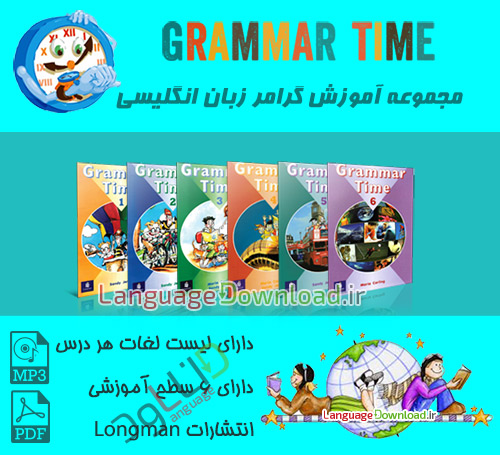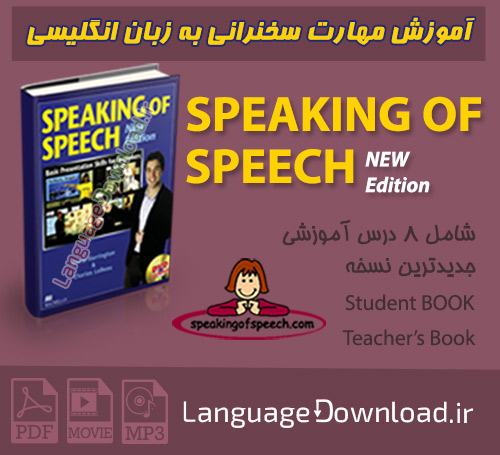یکی از مهارت هایی که همه زبان آموزان برای یادگیری آن عجله دارند، مکالمه و صحبت کردن است. در واقع، مکالمه یکی از رکن های اصلی یک زبان است. برای برقراری ارتباط در محیط کار، محیط تحصیل و … به آن نیاز دارید. پس باید مهارت مکالمه را یاد بگیرید و از آن در موقعیت های مختلف زندگی خود به راحتی استفاده کنید. در پست های مربوط به مکالمه هم قرار است که این مهارت مهم را به راحتی به شما آموزش دهیم و شما را با تمام بخش ها و مهارت های مربوط به آن آشنا بکنیم.
- بیشتر بخوانید : 12 تکنیک تقویت مکالمه انگلیسی | راهنمای کامل و ساده
همانطور که در دروس قبل متوجه شدید (دروس قبل را، می توانید در انتهای این پست ببینید)؛ این بخش، مکالمه انگلیسی را همراه با فایل صوتی مربوطه و تمام جزئیات آموزشی مربوط به آن را در اختیار شما قرار می دهد. این بخش، قسمت سوم آموزش مکالمه است و موضوع آن “معرفی افراد” است. به مکالمه زیر توجه کنید:
پیشنهادهای ویژه
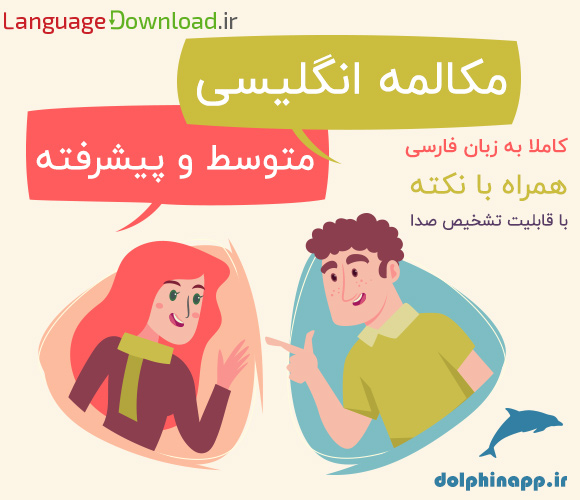
نرم افزار آموزش مکالمه انگلیسی با امکانات پیشرفته (اندروید)
با قابلیت تشخیص صدای کاربر، هایلایت مکالمه ها، تمرین و قابلیتهای فراوان دیگر
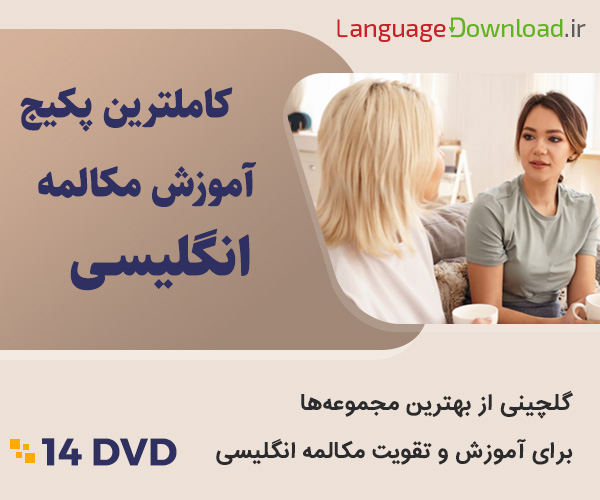
پکیج کامل آموزش مکالمه انگلیسی (14 دی وی دی)
بسته کامل از بهترین مجموعههای آموزش مکالمه
💬 ?Who Is She (اون کیه؟)

Mike: Vicky! How are you doing?
مایک: ویکی! حالت چطوره؟
Vicky: Great! How about you? How’s it going?
ویکی: عالی! شما چطور؟ اوضاع چطوره؟
Mike: Pretty good. So, how do you like the party?
مایک: خیلی خوب. خب، نظرت در مورد مهمونی چیه؟
Vicky: It’s fun. Hey, who is she?
ویکی: باحاله. هی، اون کیه؟
Mike: She? Who?
مایک: اون؟ کی؟
Vicky: Who is the tall woman?
ویکی: اون زن قد بلند کیه؟
Mike: The woman wearing red?
مایک: زنی که قرمز پوشیده؟
Vicky: Yeah, her.
ویکی: آره، اون.
Mike: That is our math teacher. She IS tall, isn’t she.
مایک: اون معلم ریاضی ماست. قد بلندی داره، اینطور نیست.
- بیشتر بخوانید : آموزش مکالمه زبان انگلیسی (هر آنچه لازم است بدانید!)
📚 لغات پرکاربرد انگلیسی مکالمه

🔸How are you doing? (phrase) : a question to find out about someone’s health or situation.
Example: How are you doing? – Not bad.
حال شما چطور است؟ (عبارت): سوالی برای پی بردن به سلامتی یا وضعیت کسی.
مثال: حال شما چطور است؟ – بد نیست.
🔸great (adjective) : very good.
Example: That shirt looks great on you!
عالی (صفت) : بسیار خوب.
مثال: آن پیراهن به شما خیلی می آید!
🔸How’s it going? (phrase) : a question to ask about someone’s health or situation.
Example: How’s it going? – Great! How about you?
How’s it going these days? – Well, actually I’ve been pretty busy.
How’s it going? – Great! How about you?
اوضاع چطوره؟ (عبارت) : سوالی برای پرسیدن در مورد سلامت یا وضعیت کسی.
مثال: اوضاع چطور است؟ – عالی! شما چطور؟
این روزها چطوره؟ – خب، در واقع من خیلی سرم شلوغ بود.
🔸party (noun) : social gathering of guests for celebration or entertainment.
Example: The guests brought many presents to the birthday party.
مهمانی (اسم) : دورهمی اجتماعی مهمانان برای جشن گرفتن یا سرگرمی.
مثال: مهمانان هدایای زیادی به جشن تولد آوردند.
🔸fun (adjective) : something people enjoy.
Example: I had fun at the birthday party.
سرگرمی (صفت): چیزی که مردم از آن لذت می برند.
مثال: من در جشن تولد لذت بردم.
🔸tall (adjective) : above-average height.
Example: He was pretty tall for his age.
Basketball players are very tall.
بلند (صفت): قد بالاتر از حد متوسط.
مثال: او نسبت به سنش قد بلندی داشت.
بسکتبالیست ها بسیار قد بلند هستند.
🔸yeah (exclamation) : yes.
Example: Yeah, I agree.
بله (حرف ندا): بله.
مثال: بله، موافقم.
🔸math (noun) : informal word for mathematics, study of numbers.
Example: I was never very good at math.
I like math class because I like numbers.
محاسبات (اسم): کلمه غیر رسمی برای ریاضیات، مطالعه اعداد.
مثال: من هرگز در ریاضیات خیلی خوب نبودم.
من کلاس ریاضی را دوست دارم چون اعداد را دوست دارم.
- بیشتر بخوانید : یادگیری صحبت کردن به زبان انگلیسی؛ همراه با معرفی منابع – بخش 1
- بیشتر بخوانید : 10 روش موثر در تقویت مهارت گفتار زبان انگلیسی – بخش 2
📑 Vocabulary Phrase Usage (استفاده از عبارت واژگانی)
In this lesson’s conversation, we heard Mike ask Vicky “how do you like the party?” “How do you like” is a phrase that we use to ask someone their opinion about something. In this case, Mike is asking Vicky her opinion about the party they are at. The question he asks is like asking, “Are you enjoying the party?” and “Are you having a good time?” For Example: “How do you like the weather today?” “It’s great. I love sunny weather.” “Me too.”
The next phrase we will look at is “Who is (so-and-so)?” In this sentence, we replace “so-and-so” with a description like “the tall man” or a pronoun like “he,” “she,” or “that.” This phrase is one way to ask information about someone you and the person you are with can see. If you think the person you are talking with has information about that person (such as the person’s name or role), you can use this question to get information. For Example: “Who is the man standing by the window?” “That is my boyfriend. Let me introduce you to him.”
در مکالمه این درس، شنیدیم که مایک از ویکی می پرسد “نظرت در مورد مهمونی چیه؟” “نظرت چیه” عبارتی است که از آن برای پرسیدن نظر شخصی دیگران در مورد چیزی، استفاده می کنیم. در این مورد، مایک نظر ویکی را در مورد مهمانی که در آن حضور دارند، می پرسد. سوالی که می پرسد مانند این است که از مهمانی لذت می برید؟ و “آیا به شما خوش می گذرد؟” به عنوان مثال: نظرت در مورد هوای امروز چیه؟” “عالیه. من هوای آفتابی رو دوست دارم.” “منم همینطور.”
عبارت بعدی که به آن نگاه خواهیم کرد این است که (فلانی) کیست؟ در این جمله، «فلانی» را با توصیفی مانند «مرد بلند قد» یا ضمیری مانند «او (مذکر)»، «او (مونث)» یا «آن» جایگزین می کنیم. این عبارت یکی از راههای پرسیدن اطلاعات، درباره شخصی است که شما و شخصی که با او هستید، میتوانید ببینید. اگر فکر می کنید شخصی که با او صحبت می کنید، اطلاعاتی در مورد آن شخص (مانند نام یا نقش آن شخص) دارد، می توانید از این سوال برای به دست آوردن اطلاعات استفاده کنید. به عنوان مثال: “مردی که کنار پنجره ایستاده کیست؟” “اون دوست پسر من است. اجازه دهید شما را به او معرفی کنم.”
/
- بیشتر بخوانید : چگونه انگلیسی صحبت کنیم؟ (پادکست های آموزشی + رایگان)
✏️ Grammar Points (نکات گرامری)
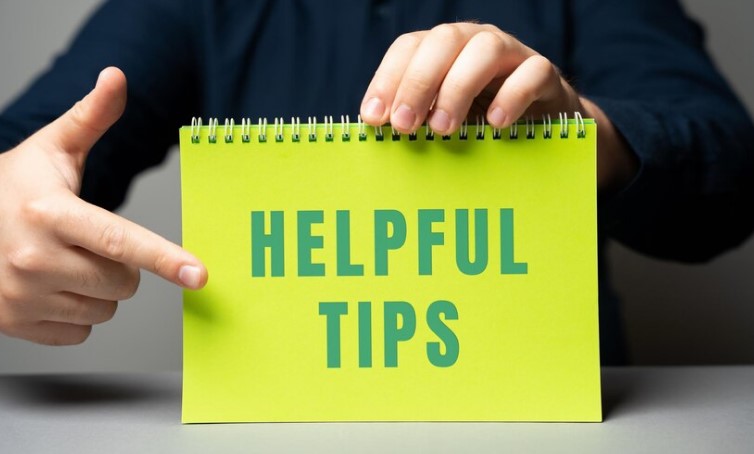
The Focus of This Lesson is “this” and “that”.
“That is our math teacher.”
As we learned in the previous lesson, “this” and “that” are called determiners and we use them to make clear which objects we are talking about, especially when there may be more than one choice.
We can use them without the nouns they modify (similar to pronouns like “he,” “she,” and “it”). We use “this” to talk about objects that are near, and “that” to talk about objects that are not so near or far away.
We use the phrase “that is” to talk about people who are not close to the speakers.
تمرکز این درس «این» و «آن» است.
“این معلم ریاضی ماست.”
همانطور که در درس قبل یاد گرفتیم، این و آن را تعیین کننده می نامند و از آنها برای روشن شدن اینکه در مورد کدام اشیاء صحبت می کنیم استفاده می کنیم، به خصوص زمانی که ممکن است بیش از یک انتخاب وجود داشته باشد.
ما می توانیم آنها را بدون اسم هایی که آنها تغییر می دهند (مشابه ضمایری مانند “او (مذکر)”، “او (مونث)” و “آن”) استفاده کنیم. ما از “این” برای صحبت در مورد اشیاء نزدیک و از “آن” برای صحبت در مورد اجسامی که خیلی نزدیک نیستند یا دور هستند، استفاده می کنیم.
ما از عبارت “آن هست” برای صحبت در مورد افرادی استفاده می کنیم که به گویندگان نزدیک نیستند.
Examples from This Lesson
Examples from This Dialogue:
“That is our math teacher.”
In this example from the dialogue, Vicky had asked Mike who the woman in red was. Mike’s answer was “That is our math teacher.” We use the phrase “that is” to refer to the “who is?” in Vicky’s question. In this case, that refers to their new math teacher. So, Mike answers “That is our math teacher.”
نمونه هایی از این درس
نمونه هایی از این گفتگو:
“آن معلم ریاضی ماست.”
در این مثال از دیالوگ، ویکی از مایک پرسیده بود که آن زن قرمز پوش کیست؟ پاسخ مایک این بود: “آن معلم ریاضی ماست.” ما از عبارت “آن هست” برای اشاره به “کیست؟” استفاده می کنیم. در سوال ویکی در این مورد، این به معلم ریاضی جدید آنها اشاره دارد. بنابراین، مایک پاسخ می دهد: “آن معلم ریاضی ماست.”
Sample Sentences
“Who is the handsome man?” – “That is my boyfriend.”
“Who is that in the black suit?” – “That is our new boss.”
جملات نمونه
“آن مرد خوش تیپ کیست؟” – “آن دوست پسر من است.”
“آن که کت و شلوار مشکی پوشیده، کیست؟” > “آن رئیس جدید ماست.”
- بیشتر بخوانید : 7 نکته برای صحبت کردن به زبان انگلیسی
🎧 متن گفتگوی فایل صوتی (Transcript)
Welcome , the best place to improve your English skills and have a good time doing it.
Thank you for joining us for Beginner Season 1, Lesson 3.
In this lesson, you’ll learn how to describe people.
This conversation takes place at the social hall of a college.
The conversation is between Mike and Vicki, two classmates.
The speakers are friends, therefore the speakers will be speaking casual English.
Now, if you’re listening on an iPod, or an eye touch or iPhone, click the center button of the iPod, or tap the screen on an eye touch or iPhone
to see the notes for this lesson while you listen.
Read along while you listen.
This technique will help you remember faster.
Let’s listen to the conversation.
Vicki, how are you doing?
Great, how about you? How’s it going?
Pretty good. So, how do you like the party?
It’s fun. Hey, who is she?
She? Who?
Who is the tall woman?
The woman wearing red?
Yeah, her.
That is our math teacher. She is tall, isn’t she?
Now let’s listen to it one time slowly.
Vicki, how are you doing?
Great, how about you? How’s it going?
Pretty good. So, how do you like the party?
It’s fun. Hey, who is she?
She? Who?
Who is the tall woman?
The woman wearing red?
Yeah, her.
That is our math teacher. She is tall, isn’t she?
So, it sounds like Mike and Vicki are enjoying the party.
Yeah, it does.
Have you been to any parties lately?
Any parties lately? Actually, I haven’t, unfortunately.
Yeah, how about you?
Yes, the most recent party I went to was for a wedding.
What are some other examples of parties we have in America?
Well, there’s birthday parties.
Those are very common, and also graduation parties.
Right. Also, we have Christmas parties and Halloween parties.
And, oh, don’t forget New Year’s Eve parties.
Oh, those are great.
Those are really big.
Yeah. There are many kinds of parties.
Sometimes we just make up excuses to have a party.
That’s right.
Okay, now let’s look at some of the vocabulary and phrases for this lesson.
How are you doing?
A question to find out about someone’s health or situation.
How are you doing?
Next, great.
Very good.
Great. Great.
Next, how’s it going?
A question to ask about someone’s health or situation.
How’s it going?
Next, party.
A social gathering of guests for celebration or entertainment.
Party. Party.
Next, fun.
Something people enjoy.
Fun. Fun.
Next, tall.
Above average height.
Tall. Tall.
Next, yeah.
Yes.
Yeah. Yeah.
And the last one?
Math.
Informal word for mathematics, the study of numbers.
Math. Math.
Let’s have a closer look at the usage for some of the words and phrases from this lesson.
In this lesson’s conversation, we heard Mike ask Vicki, how do you like the party?
How do you like is a phrase we use to ask someone their opinion about something.
In this case, Mike is asking Vicki her opinion about the party they’re at.
The question he asks is like, are you enjoying the party and are you having a good time?
Jesse, let’s give an example.
Sure.
How do you like the weather today?
It’s great. I love sunny weather.
Me too.
Now, there’s something we want you to be careful about.
There is a difference between the questions, do you like and how do you like?
That’s right. Do you like is a simple yes or no question.
For example, I could ask Jesse, Jesse, do you like pizza?
Yes, I love it.
But the question, how do you like is asking for your opinion or your thoughts on something.
So you cannot answer with a yes or no.
So I could ask Jesse, how do you like this pizza?
It’s really good.
So remember that when you are asked how you like something, you must give your opinion.
The next phrase we’ll look at is, who is so-and-so?
Where so-and-so is replaced by a description like the tall man or a pronoun like he, she, or that.
This phrase is one way to ask about someone you can see.
If you think the person you are talking with has information about that person, such as the person’s name or role, you can use this question to learn more about that person.
Let’s look at another example.
Okay, who is the man standing by the window?
That is my boyfriend. Let me introduce you to him.
Alright, let’s now turn to the grammar point.
The focus of this lesson is the words this and that.
As we learned in the previous lesson, this and that are called determiners, and they are used to make clear which objects are being talked about, especially when there may be more than one choice.
These words can be used by themselves, similar to pronouns like he, she, and it.
This is used to talk about objects that are near, and that is used to talk about objects that are not so near or far away.
In the previous lesson, we looked at how this is is used to introduce people who are near.
So, let’s take a look now at how that is is used.
The phrase that is is used to talk about people who are not nearby the speakers.
Let’s look at an example from the dialogue.
In the dialogue we heard, that is our math teacher.
In this example from the dialogue, Vicki had asked Mike who the woman in red was.
And Mike’s answer was, that is our math teacher.
The phrase that is is used to refer to the who is in Vicki’s question.
In this case, that refers to their new math teacher.
So Mike answers, that is our math teacher.
Now, let us look at some sample sentences.
Who is the handsome man?
That is my boyfriend.
Who is that in the black suit?
That is our new boss.
There is a detailed write-up about this grammar point in the PDF for this lesson, so please be sure to visit the website and look at the PDF.
Well, that just about does it for today.
But before we go, we want to tell you about a way to drastically improve your pronunciation.
The voice recording tool.
Yes, the voice recording tool in the premium learning center.
Record your voice with a click of a button.
And then play it back just as easily.
So you record your voice and then listen to it.
Compare it to the native speakers.
And adjust your pronunciation.
This will help you improve your pronunciation quickly.
Okay, we’ll see you next time.
Bye.
Vicki, how are you doing?
Great. How about you? How’s it going?
Pretty good. So, how do you like the party?
It’s fun. Hey, who is she?
She? Who?
Who is the tall woman?
The woman wearing red?
Yeah, her.
That is our math teacher.
She is tall, isn’t she?
لیست درسهای مکالمات رایج انگلیسی
پیشنهادهای ویژه

نرم افزار آموزش مکالمه انگلیسی با امکانات پیشرفته (اندروید)
با قابلیت تشخیص صدای کاربر، هایلایت مکالمه ها، تمرین و قابلیتهای فراوان دیگر

پکیج کامل آموزش مکالمه انگلیسی (14 دی وی دی)
بسته کامل از بهترین مجموعههای آموزش مکالمه



